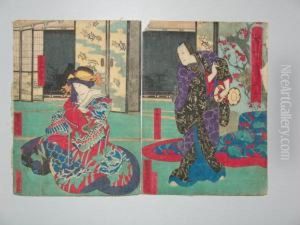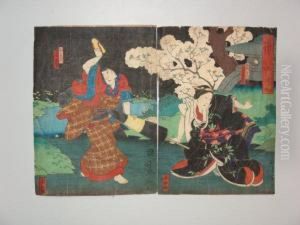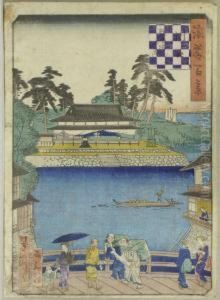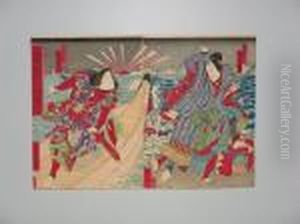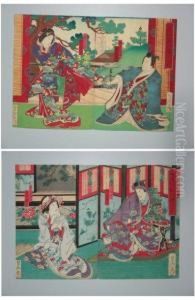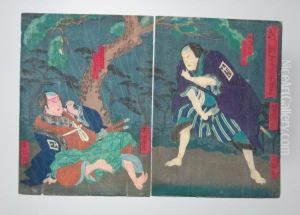Nakai Utagawa Yoshitaki Paintings
Nakai Utagawa Yoshitaki, born in 1841 and passing away in 1899, was a Japanese ukiyo-e artist known for his contributions to the world of Japanese woodblock prints, particularly in the genre of kabuki theater prints. Operating in the late Edo and early Meiji periods, Yoshitaki's career spanned a time of significant transition in Japan, from the isolationist policies of the Tokugawa shogunate to the modernizing era of Meiji Restoration. This period was marked by rapid social, political, and technological changes, which were reflected in the evolving styles and themes of ukiyo-e art. Yoshitaki was based in Osaka, making him a central figure in the Osaka printmaking tradition, which was somewhat distinct from the more widely recognized Edo (modern-day Tokyo) ukiyo-e scene.
Yoshitaki's work is especially noted for its vibrant use of color and dynamic compositions. He specialized in yakusha-e, prints depicting kabuki actors and scenes from popular plays of the time. These prints served not only as a form of entertainment but also as a way for the populace to remain connected to the theatrical world, much like modern-day posters and promotional material. Yoshitaki's prints are characterized by their detailed portrayal of costumes, facial expressions, and the dramatic poses of kabuki actors, capturing the essence of the performance and the individuality of the actors.
During his lifetime, Yoshitaki produced a vast number of prints, contributing to the proliferation of the Osaka style of ukiyo-e. His work was influential in maintaining the popularity of the woodblock print as a medium even as Japan underwent profound transformations. However, like many of his contemporaries in the Osaka school, Yoshitaki's name is less recognized internationally than those of artists from the Edo tradition, such as Hokusai and Hiroshige. Despite this, his prints are highly valued by collectors and scholars for their artistic quality and historical significance.
Yoshitaki's legacy is important for understanding the ukiyo-e genre's regional diversity and the role of art in the cultural life of Japan during a critical period of change. His depictions of kabuki theater not only document the performances of his time but also offer insights into the cultural and societal shifts occurring in Japan as it opened up to the world in the late 19th century. After his death in 1899, Yoshitaki's contributions continued to be appreciated by those interested in the history of Japanese art and the unique window it provides into the cultural landscape of the Meiji era.
